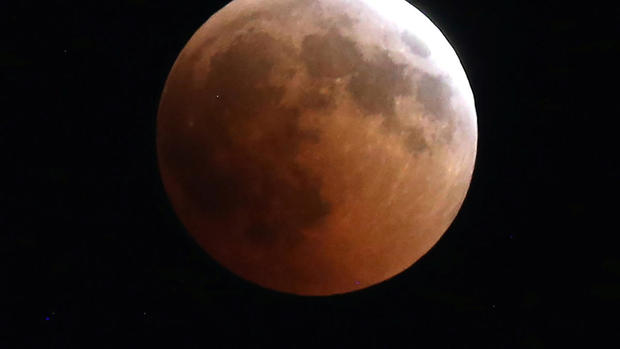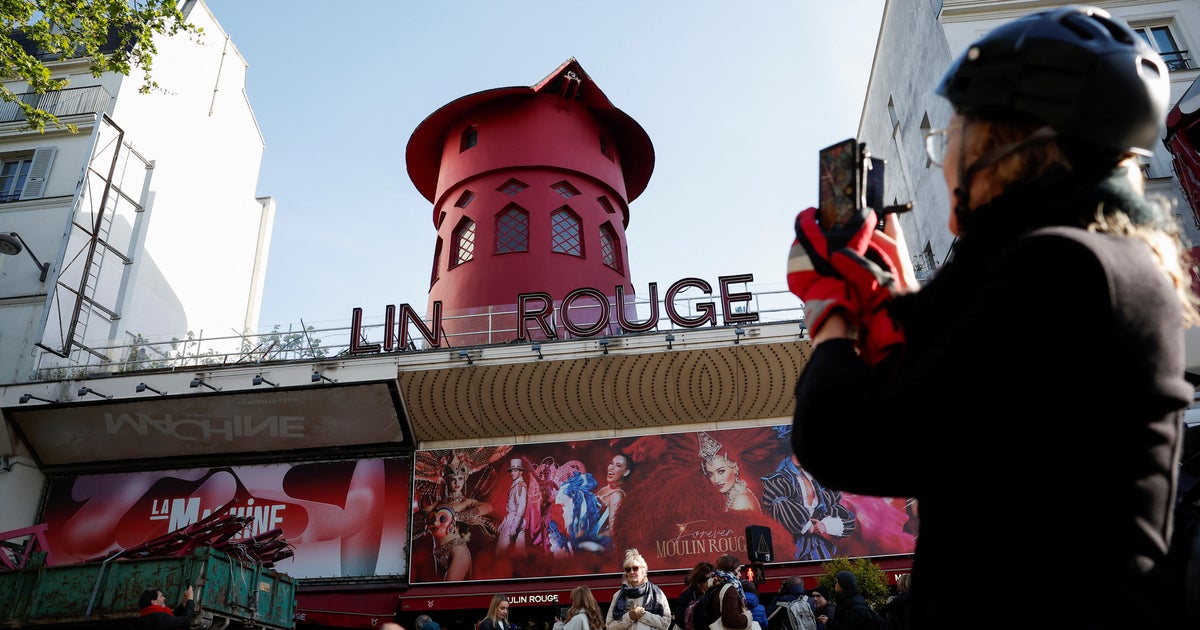"Blood moon" eclipse, Mars provide treat for skywatchers
JOHANNESBURG -- Skywatchers around much of the world were treated to a complete lunar eclipse that was the longest of this century. The total eclipse lasted 1 hour and 43 minutes, with the entire event lasting closer to four hours.
Astronomer Kobie Van Zyl with the Johannesburg Planetarium in South Africa told CBS News foreign correspondent Debora Patta the reason for the eclipse's length was because of the distances between the Earth and the moon and between the Earth and the sun. On Friday, the moon would reach its farthest point from Earth — about 250,000 miles away — and the Earth was at its farthest point from the sun, Van Zyl said.
"We will see totality eclipses happening again, but nothing this long," he said. "This is the longest for the next hundred-odd years."
Because the moon was at the farthest point on its orbit from Earth, its movement across the sky was slower from our perspective, according to AFP. Thus it's spending longer in the dark.
The so-called "blood moon," when it turns a deep red, was visible at different times in Australia, Africa, Asia, Europe and South America. When the sun, Earth and moon line up perfectly, Earth's shadow was cast on the moon.
Rio de Janeiro's spectators cheered when the blood moon emerged from the fog. Hundreds of people watched at a fort overlooking the iconic Copacabana beach and Sugarloaf Mountain. The local planetarium set up telescopes for astrology fans.
"These telescopes are fantastic. It's one thing to see pictures of the planets in a book and another to see it in real life," said Ana Selma Ferreira, a 46-year old lawyer who brought her children to the spectacle.
Across Africa, people turned to the sky, watching the reddish shadow slide up the moon's surface. In Somalia's capital, Mogadishu, hundreds of people hurried to mosques for special prayers often observed during lunar eclipses while clerics on loudspeakers urged them along.
In South Sudan, some dared to take photos in a war-torn country where using a camera in public is discouraged. In Ethiopia's capital, Addis Ababa, people at an open-air restaurant admired a rare clear view during the rainy season, comparing a live NASA webcast to what they saw above.
Then clouds rolled in. "Dem yelebesech chereka," some murmured - Amharic for "blood moon."
"The reason that the moon turns red is because atmospheric scattering causes red light to pass through the atmosphere and the composition of the atmosphere can change if volcanic eruptions or forest fires occur," said Tom Kerss, an astronomer with the Royal Observatory Greenwich. "And the density of dust increasing in the atmosphere can cause the moon to appear a particularly deep red, and indeed it has the same effect on our sunsets and sunrises."
Derrick Pitts, chief astronomer at the Franklin Institute in Philadelphia, told CBSN that the "blood moon" phrase was only recently attached to the phenomenon. "It really was more of a public relations or public affairs kind of thing than it was anything else because you know the moon's color in eclipses can range anywhere from a tan or coppery color actually," Pitts said.
"It could even occur in such a way that it just barely has any color at all. But when you get really deep lunar eclipses, like we've had a few of over the last couple of years, a really great way to promote that is if you attach the moniker onto it that it's a 'blood red' moon and that really engages people to go out and see it."
In a special treat, Mars was also at its closest approach to Earth this week since 2003, making it appear bigger and brighter. NASA has called out social media hoaxers claiming that Mars will appear as big as the moon during the eclipse, AFP reports.
Excited skywatchers on social media shared photos of the bright planet just to the right of the moon. North America missed out on Friday's lunar eclipse but can look forward to the next one on Jan. 21, 2019, according to NASA.




